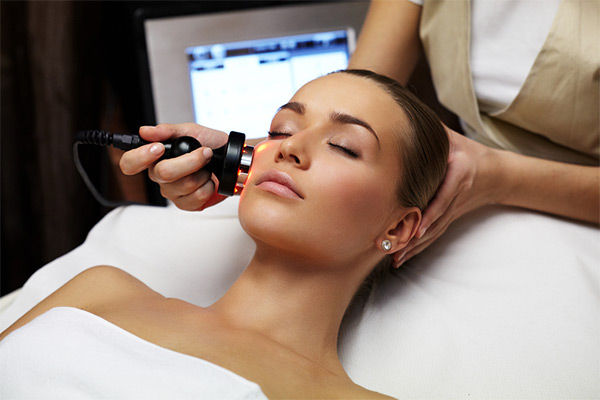Got a new dark spot that you’ve grown concerned about?
You should be.
With an estimated 2 to 3 million and more people being diagnosed with melanoma every year, you have every reason to pay closer attention to new and unusual growths on your skin.
The World Health Organization[1], in fact, has already warned that 300,000 more people will succumb to skin cancers with every 10 per cent decrease in ozone.
Then again, there may not be any cause for worry but, it’s always best to err on the side of caution.
What Is Solar Lentigo?
Solar lentigo is a general term for dark spots that often appear on areas of the skin that are often exposed to UV. That includes the face, neck, chest, arms, and hands.
These can often be mistaken for freckles but, these appear to have a different shade, often darker, than other freckled spots on the face[2].
Men and women, fair and dark-skinned can develop these marks.
These spots are common and appear in greater sizes and numbers among older people.
The primary cause of sunspots or solar lentigines is excessive exposure to the sun’s UV rays.
People who like their skin tan also often develop these age spots from tanning beds.
Here’s what happens underneath your skin that favors the development of solar lentigo:
- First, sunlight strikes your skin. Your skin responds by releasing melanin, the pigment that gives skin its natural color, in an attempt to block off the harmful UV and protects your skin.
- Second, for some reason, the melanin produced by your skin ends up becoming concentrated over one area instead of being distributed around the area hit by UV.
- Third, spots that are sun tan, black, or brown appear, which can spread out or become darker over time.
When it comes to age spots, the genes that you inherit can also be one of the causes of solar lentigines.
Other causes include exposure to radiation and other forms of phototherapy.
Still, the top cause is sunlight exposure (or, over-exposure) over the course of several years.
The Different Types Of Solar Lentigo
There are different types of solar lentigo that you can develop.
Often, this help dictate the solar lentigo treatment course that you should take.
While most sunspots will be benign, these are normally considered as common skin problems on the face or, where they appear because those areas will often be the ones exposed to sunlight on a daily basis.
Here are some of the varieties of solar lentigo:
1. Lentigo Simplex
This is the kind of lentigo that appears early in life, as early as toddler years, and as late as puberty.
These types of sunspots can suddenly appear then, suddenly disappear before adulthood sets in.
2. Solar Lentigo
The primary cause of which is sun damage and is considered as an early form of melanoma.
This condition is found on the superficial layer, the epidermis, where malignant cells lie.
These are often found on frequently damaged parts of the face, particularly the high points of the nose and cheeks.
Solar lentigo removal via surgery may be recommended but, there is a high likelihood that the condition will manifest in another spot.
7 Ways To Treat Solar Lentigo
When the lentigo is benign, there are at least 7 solar lentigo treatment options that you should consider, most especially when its appearance is getting in the way of your self-esteem:
1. Cryotherapy
This treatment for solar lentigo utilizes liquid nitrogen to kill the melanocytes that cause the skin to darken.
The liquid is applied onto the affected spot, causing the temperature to drop in the area as low as -7 degrees Celsius.
Slight discomfort and mild pain can be expected during the treatment. Scarring will follow.
There is a possibility that hypo pigmentation[3] or, loss of skin pigment can be a side effect but, one which can be avoided depending on the specialist’s or aesthetician’s skills and techniques.
2. Trichloroacetic Acid (TCA) Peel
The most severe chemical peel used to slough off the skin can also be used to deliberately burn and peel off solar lentigo at 35 percent concentration.
The treatment works by crusting then peeling off, as the follow-through treatments facilitate faster skin turnover to eliminate the pigmented spot.
3. Topical Tretinoin
Retinoids have melanin-inhibiting properties that support skin lightening.
The more dramatic transformation it can bring, however, is facilitating the more rapid regeneration and turnover of your skin.
The process sloughs off your skin layer by layer until all the damaged layers have been eliminated and a newer, less pigmented skin layer rises to the surface.
4. Hydroquinone
Skin care issues often involve dark spots that, for a time, have been commonly prescribed hydroquinone to facilitate tightening of the skin.
This topical treatment will take time and continuous application to lighten and renew your skin.
It will work but, you must also note that hydroquinone has been found to be a suspected carcinogen, and has since been banned in many countries in Europe, but not in the US.
5. Laser Surgery
Currently touted as the best treatment for solar lentigo, this course, however, can be the most expensive option.
It uses specific wavelengths of light to target damaged cells only, unlike the massive damage that a TCA treatment can cause your skin. Downtime is minimal and treatment, highly effective.
6. Combination Treatments

Combination Treatments – Image/Shutterstock
Some skin care experts will also tend to combine chemicals for peels, as well as do the treatment in phases that may include both laser treatments and chemical peels.
7. Intense pulsed-light (IPL) treatment
This minimally invasive treatment allows for the specific targeting of damaged skin cells.
The technique uses different wavelengths of light to deliberately damage and eliminates spots affected by solar lentigo as it simultaneously stimulates faster skin turnover.
How To Prevent Solar Lentigo
Although solar lentigo is common, nothing should stop you from adopting a daily skincare routine that can help you prevent getting this condition, even when you’re older.
Here are some of the sun protection tips that you can follow:
1. Practice Smart Sun Time
Your body needs sunshine.
Choose when to bask — that would be in the early hours of the morning — to fulfill your body’s need for Vitamin D.
After 15 minutes, move back indoors to apply your broad-spectrum sunscreen that is at least SPF 30 like Dr. Jart + Sunscreen Broad Spectrum SPF 50.
Allow another 15 minutes to activate the sunscreen ingredients before stepping back out into the open.
2. Never Rely Solely On Your Sunscreen For Sun Protection

Sun Protection To Prevent Solar Lentigo – Image/Shutterstock
There is no sunscreen that can give you absolutely 100 percent protection from UVA and UVB.
Use other means to shield your skin, which includes wearing the right gear and clothing, and putting on sunglasses and a broad-brimmed hat.
3. Don’t Tan
You shouldn’t deliberately damage your skin for a sun-kissed appeal — not under the sun and certainly not on tanning beds either.
Don’t believe claims that there are safe ways to tan your skin, other than doing so with makeup.
4. Stay Out of The Sun

Stay Out of The Sun – Image/Shutterstock
Whenever you can, stay indoors.
FAQ’s:
Que: What is the best treatment for solar lentigo?
Ans: Laser therapy is superior to liquid nitrogen for the treatment of solar lentigines. Of the laser systems tested in this study, the frequency-doubled Q-switched Nd: YAG laser is the most effective.
Que: How do you get rid of solar lentigo?
Ans: Cryotherapy and laser surgery can destroy them, but treatment may leave a temporary or permanent white or dark mark.
Que: How do you remove solar lentigines from your face?
Ans: To lighten or remove lentigines, the following are the treatments:
- medicines such as bleaching creams containing hydroquinone or retinoids.
- chemical peels.
- Laser or intense pulse light therapy to destroy melanocytes.
- Freezing (cryotherapy) to destroy melanocytes.
Conclusion
There are many different ways to improve dark marks on your skin, that includes solar lentigo.
In any case, and most especially with this skin condition which is caused by harmful sun rays, there can be no better measure to take than prevention.
So, have fun in the sun but, keep in mind that irreversible damages can develop so it is always best to take precaution.
Like this post? There’s more. Get tons of beauty tips, tutorials, and news on the thebeautyinsiders Facebook & Twitter page. Like us on Facebook – we’ll see you there!






 This article changed my life!
This article changed my life! This article was informative.
This article was informative. I have a medical question.
I have a medical question.
 This article contains incorrect information.
This article contains incorrect information. This article doesn’t have the information I’m looking for.
This article doesn’t have the information I’m looking for.